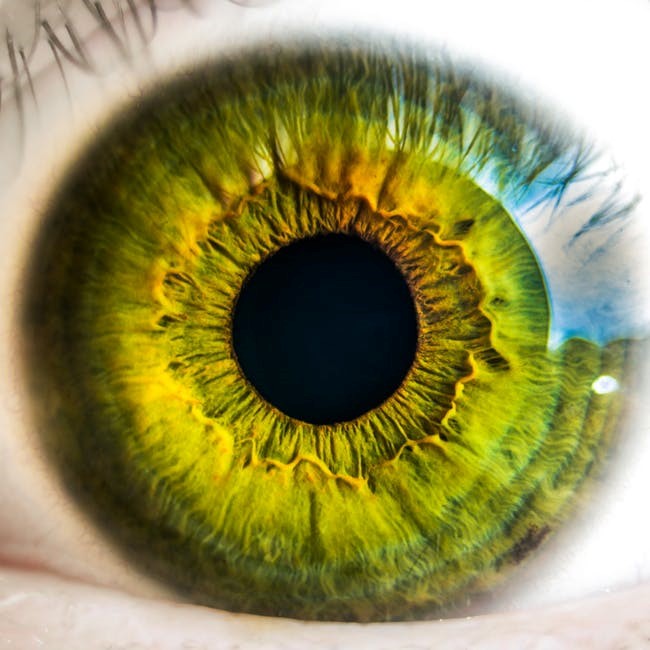
fciwomenswrestling.com, femcompetitor.com article, pexels.com pixabay.com phto credit
Some subjects are often not discussed but should be.
Often.
Glaucoma is one of those subjects.

According to glaucoma.org, “January is National Glaucoma Awareness Month, an important time to spread the word about this sight-stealing disease.”
We agree. Let’s spread the word. We have a visiting female writer who can effectively do that.
Please meet Ms. Meredith Rogers.
Meredith Rogers is a Registered Nurse and health writer that has witnessed many devastating stories that result from Glaucoma. She is determined to raise awareness about this horrible and secretive disease as a part of the Glaucoma Awareness Month.
Please enjoy and more important, learn.
10 Facts About Glaucoma You Did Not Know About

Glaucoma is a group of diseases that cause damage to the optic nerve, which can result in a significant loss of vision and even blindness. In fact, glaucoma is one of the leading causes of blindness in the U.S., affecting more than 3 million Americans. For an issue that is fairly common and affects so many individuals, there is so much useful information about glaucoma that is not often discussed. To demystify this disease and provide beneficial knowledge that could help save your vision, here are 10 lesser known facts about glaucoma:
- Glaucoma is the result of pressure buildup in the eye
For healthy vision, the eye must have the ability to regulate pressure by draining excess fluid. Glaucoma occurs when they eye is not able to properly drain this fluid, and the fluid buildup causes an increase of pressure. That pressure then goes on to cause damage to the optic nerve, which connects the retina to the brain, thus resulting in vision loss and potentially even blindness. However, early detection and treatment can help protect against serious vision loss.
- Glaucoma is more common than you would think
More than 2.7 million Americans over the age of 40 suffer from glaucoma, and that number is expected to double by the year 2050. Although glaucoma is one of the leading causes of blindness in the United States, research and awareness can play a significant role in decreasing the burdensome effects of the disease.
- You may not see any warning signs
While early detection and treatment can make a big difference in the severity of glaucoma and its effects, a lack of symptoms can make the disease very challenging to identify in the first place. Because glaucoma often sets in with little to no obvious symptoms or warning signs in the beginning, it is often said to come like a “thief in the night,” taking over your vision before you have a chance to stop it in its tracks. Glaucoma is typically characterized by a gradual loss of vision, beginning with the peripheral vision. Anyone is at risk of suffering from glaucoma, from infants to senior citizens. The best way to detect and prevent glaucoma early is with annual eye exams with either an ophthalmologist or an optometrist.
- Certain factors can increase the risk of glaucoma
While anyone can develop glaucoma, at any age or walk of life, it is important to be aware of certain factors that can increase your risk. Some of these factors include: being over the age of 60; having a family history of glaucoma; being of African-American, Asian, or Hispanic descent; suffering from diabetes; previous or current use of steroids; and previous eye injury. If you are over the age of 35 and fall into any of these high risk categories, a comprehensive eye exam every one to two years is highly recommended to help prevent the onset of glaucoma.
- Glaucoma is irreversible
There is currently no cure for glaucoma, and its effects on vision are irreversible. This is why it is so important to catch the disease early on and begin proper treatment. When glaucoma is detected early, the proper treatment will slow the progression of the disease to prevent serious vision loss. These treatment methods will serve to regulate pressure in the eye and help fluid to drain properly, which in turn will prevent damage to the optic nerve. Once the effects of full blown glaucoma begin to take place, the damage is irreversible and incurable. Thus, it is very important to detect and treat glaucoma early.
- You might not feel pain
It would be natural to think that a buildup of fluid and pressure in the eye would be painful, and that this pain would be helpful in determining that something is wrong. However, glaucoma tends not to cause any pain, and this is one of the reasons the disease goes undiagnosed for long periods of time in many individuals until significant vision loss is observed, at which point the damage is already being done.
- Anyone can develop glaucoma
Another myth or stigma around glaucoma is that it tends to be most commonly associated with older individuals, particularly senior citizens. For this reason, glaucoma often goes undiagnosed in young adults and even children. The reality is that glaucoma can affect any person at any age, and so it is never too early to begin having regular, annual eye exams to detect any and all changes in vision, even changes that seem minor. After all, glaucoma sets in gradually and begins with peripheral vision. The tests included in a comprehensive eye exam are thorough and should be more than effective in detecting early signs of glaucoma.
- A comprehensive, dilated eye exam is the best way to catch glaucoma early
What does a comprehensive, dilated eye exam include? First, it includes dilation, which widens the pupil, thus allowing the eye care professional to view the inside of the eye. Under a magnifying lens, the professional will be able to examine important tissues found at the back of the eye such as the retina, the macula, and the optic nerve. The exam will also include a visual field test, which measures peripheral vision, and a visual acuity test, which measures vision at various distances. Finally, the exam will include tonometry, which is a test specifically designed to detect glaucoma. In this test, a quick puff of air directed into the eye will determine whether elevated pressure is present.
- Glaucoma results in lots of doctor visits and big medical bills
Glaucoma accounts for over 10 million visits to eye doctors each year, and has cost more than $2.8 billion per year directly and in productivity costs. Glaucoma is, among other things, time consuming and expensive. But thankfully, these burdens can be avoided through early detection.
- Many people don’t get their eyes checked
Only 6 out of every 10 adults get an eye exam at least once every two years. Don’t become a statistic! You only get two eyes, and your vision is irreplaceable. Make time for your vision, and don’t wait until it’s too late!

~ ~ ~
OPENING PHOTO fciwomenswrestling.com, femcompetitor.com article, pexels.com pixabay.com phto credit
https://geriatricnursing.org/category/blog/
https://www.glaucoma.org/news/glaucoma-awareness-month.php
glaucoma pexels.com Omar Alnahi photo credit



